
It allows to keep PV going, with more focus towards AI, but keeping be one of the few truly independent places.
-
Aki, the guy doing the testing of purple filters to try and improve image on the GH1 didn't like the aliasing he was seeing. He tried serveral fixes and one he says he found is to shoot interlaced.
Some of what he's saying I don't get...ok most of what he's saying. ^_^ But has anybody tried maxing out the bitrate at 60i? Is it possible to get more out of the GH1 than 100mb Max Lat? I tried some of what he's talking about and I get this in some of my footage when I try to go low GOP and 60i. This pic is at GOP3 1080i, when I tried messing around with peak reliability hack. That pic is unwrapped with cineform.
Possible to get more than 100mb at 60i?
EDIT: Those blocks/errors happen at fast pans.
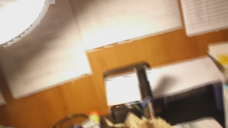
 GOP3iii.png1920 x 1080 - 1M
GOP3iii.png1920 x 1080 - 1M -
I can't get that is this topic about?
-
@Vitaliy_Kiselev Is 1080 60i on the GH1 at high bitrates more stable than native 24p? Since the original firmware was for 60i with 24p in the wrapper and it took some work to get native 24p, is it possible to get even higher quality with something closer to the original firmware ?
-
I am positive that the Interlace settings can record and compress a better quality image. The Native settings are very heavily sharpened and this was the cause for the aliasing. This sharpening is not real image detail but still consumes bits unnecessarily whereas the Interlace settings are less sharpened and thus can compress more of the actual image. You will get a more detailed image that can be sharpened later in editing program.
It's the Interlace wrapper settings that are actually native for GH13. The Interlace wrapper is there on purpose. Or more like was, before it was removed. The aliasing and sharpening of the Native settings only became a problem when we got more and more sharper images by filtering to magenta.
The aliasing was always there in the Native settings, I just did not notice before and it was not an issue back then.
-
@zcream I tried GOP1 interlaced but it automatically converts it to native 24p at that low a GOP. I tried GOP2 and 4 and got I frames like this at 60i:
Also any fast movements cause these errors. It only works at GOP2 at 50i PAL. LPowells Fast Action 3GOP patch did record the Papas 2k chart longer than any other hack I tried at 60i, but....eh.
I think Aki has shown that a proper purple filter will produce a better image, but he's emphasizing too much on the aliasing he sees that I don't think 99% of an audience would never notice. I think I won't mess with interlaced anymore, just concentrate on finding a good magenta optical glass filter at a decent price.
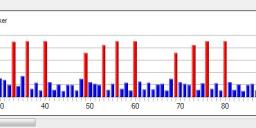
 Capture.JPG1220 x 231 - 61K
Capture.JPG1220 x 231 - 61K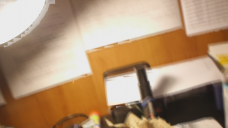
 GOP3iii.png1920 x 1080 - 1M
GOP3iii.png1920 x 1080 - 1M -
@zcream GOP-1 interlaced did not record at all. Is there a way to fetch the ini settings from a patched firmware file? I did not record all of the settings but I am pretty sure I started with lpowell Fast Action GOP-3 and changed to GOP-2 and upped bit rates in this order:
59000 46000 32000 64000
These settings are near-fantastic for me. Some softening can be found with critical eye but motion and anti-aliasing are perfect. It would be great if somebody could look at the settings in the know of the compression efficiency. I can at least upload a MTS sample video, which I will do next. I hesitate to hack again right now, because it's that good.
@CRFilms the anti-aliasing and 180 degree shutter were the icing on the cake for me. I am pretty much done and can start to provide samples and details of the work flow next. I need to film some more samples, the aliased versions that I have are a bit too aliased for my taste.
-
Can you guys get something out of this StreamParser screen grab? Basically the situation is as follows
- Good or excellent motion
- Good detail and anti-aliasing (can be sharpened in post)
- Allows recording in daylight and with a sharp lens (if it fails, it fails gracefully)
- Strong colors in motion display softening every other frame
- Some softening in the transition between light and shadow
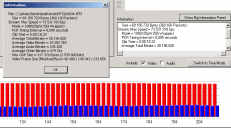
 blueLightStreamInfo.png733 x 406 - 19K
blueLightStreamInfo.png733 x 406 - 19K -
I am going to have to add rather poor low light performance. Bit rate falls quite low in the dark.
-
@CRFilms - "Is it possible to get more out of the GH1 than 100mb Max Lat?"
Not unless you enjoy the suspense of gambling on whether the camera's going to reliably make it through each shot. Likewise, reducing the Fast Action Patch to something lower than a 3-frame GOP pushes the GH1 very close to the edge of instability, while dramatically reducing its encoding efficiency. The reason GOP-3 works well in the Fast Action Patch is because it's recording at only 720p25 or 720p30. If you to push those numbers higher (or the GOP lower), it will quickly run out of bitrate and produce suboptimal results.
-
It's producing quite good results for me. You probably did not look at the image very closely, but the outlines in Native settings are not right. They are distorted because something happens to the macro blocks.
Outlines are closer to looking right in the Interlace wrapper settings. Unfortunately GOP-3 is a strobing motion cadence.
-
@aki_hartikainen Unlike its NTSC Native 24p mode, the GH1 encodes each frame of its PAL 25p mode in an interlaced format, even when it's in Native 25p mode. As a result, the odd-numbered scanlines are encoded with coarser quantization than the even-numbered scanlines, and this can sometimes produce visible encoding artifacts. Unfortunately, the only way to avoid this on the GH1 is to use NTSC Native 24p mode instead of 25p.
-
Attached is a magnification of what the Native settings do to the image. They are clearly unsuitable for the camera. As the definition got better when using strong color correction filters, the aliasing became a problem but it was always there. The image is without a color correction filter.
Switching to 25p iW solved the problem of broken outlines and heavy aliasing, although some aliasing still remains. The amount of captured detail appears to be the same. The broken outlines in Native settings consume bits unnecessarily by creating false contrast, as seen in the image.
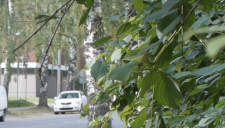
 blueLightNativeSettings.png1648 x 939 - 1M
blueLightNativeSettings.png1648 x 939 - 1M -
@aki_hartikainen I downloaded your sample image, but it's too soft for me to see what you're talking about. If you can upload a short MTS file to Vimeo, I'll be happy to download and analyze it.
-
It's actually from a quite sharp source video and image file, I use the sharpest lenses available. I made another copy for you and encircled some of the problem areas. The branches are the broken outlines mentioned. Would that help you to see it?
It became even more of a problem when the definition improved when using color correction filters. I had to find a solution and it was switching to 25p iW. They appear to be the "native settings" for GH13 and do not exhibit broken outlines in the same amount.
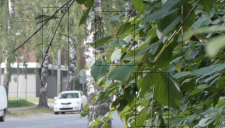
 blueLightNativeSettings2.png1648 x 939 - 1M
blueLightNativeSettings2.png1648 x 939 - 1M -
@aki_hartikainen Sorry, but once the original MTS file has been transcoded into a different format, the original encoding information is lost and there is no way to reconstruct the original image details. When evaluating aliasing and encoding artifacts, there's no substitute for the original video files.
-
@LPowell Most of what Aki is talking about only works at 50i. It's unstable at 60i. Look at the stream parser pic I posted above, that's 60i at gop4. Aki is GOP2 at 50i, my GOP2 at 60i also looked unstable.
Yeah, ultimately I'm just gonna use your Max Lat with a proper optical magenta filter and that's good enough for me.
-
@lpowell The PNG image is captured from the actual MTS file by VLC Media Player, so there is nothing wrong with it. It fully illustrates the problem, which could be traced to the so-called Native settings. The outlines are deformed and unsuitable for cinema production. When the image quality improved by color filtering the problem became unbearable, so a fix had to be found.
The outlines are better and more natural when using 25p iW, thus better suited for cinema production. 25p iW settings may otherwise not be ideal, but the image is. My current thinking is that the so-called Native settings corrupt the image data somehow, and record false contrast instead of proper image outlines that the 25p iW settings can provide.
There may be a bottle-neck in the camera circuitry, that has been handled by not sending full frames, but half frames instead. Attempting to send full frames through the bottle-neck records false contrast instead of picture detail.
-
I would like to know what prevents developing the 25p iW GOP-2 a bit further, especially if the image is more organic and natural? I am after the best and most cinematic image that the camera can provide, and not willing to debate or argue compression efficiency.
The 25p settings are the only way to achieve 180 degree shutter on the GH cameras. Anything else is not cinema. The 25p iW settings entirely solved the deformed outline problem.
The image looks better with these settings, and I only threw some bitrates at it with no knowledge at this point how the encoder works. I could find out with a lot of time and work, but if somebody already knows about it, why not look into it?
-
@aki_hartikainen I think I made it clear what I would need in order to evaluate your claims. If you're not able to provide sample footage of original MTS source files, there's little of practical value I can offer to help you.
-
Hi aki. I think all lpowell needs is the MTS footage (maybe a second). Ideally we could have one of all these. 1. no filter, lpowell Fast Action settings 2. filter, lpowell Fast Action settings 3. filter, lpowell Fast Action interlaced settings.
You dont need to upload anything. Dropbox, Google Drive or Windows Live will allow you to store many GBs of data and you can send us the link for downloading.
Also, there is a choice in menu ptools where you can save the ini settings.
-
I have made available two MTS files as follows,
http://www.fourseasonshd.com/MTS/deformedOutline.MTS (65 Mb)
In the center of the image is a lamp post or street lamp. When the camera pans to the right, you should be able to see the problem. The file was taken with rig's GOP-1 settings, but the same deformed outlines are in all Native settings that I have checked, atleast 23.976p, including lpowell Max. Latitude. This problem has been reported by others, so it is not a problem caused by my camera or settings. I have had several GH13 cameras and all of the material filmed with Native 23.976p settings exhibit the deformed outlines, atleast when looked a bit more closely.
http://www.fourseasonshd.com/MTS/25piWlowBitrate.MTS (11 Mb)
is a file taken with 25p iW settings at GOP-2 and bit rates adjusted in random fashion. This was a last ditch attempt by myself to trace the deformed outlines problem and to my vast surprise these settings fully eradicated the deformed outline problem illustrated in the PNG screen grab image above taken with lpowell Max. Latitude settings and in the the first MTS file linked above in this post.
25p iW settings provided ideal image shape and geometry for grading in cine style, but it has low bit rate in dark scenes which causes posterization. The image looks softer at first, but it is because there is no false contrast to make it appear sharper than it is. It is possible to bake in sharpening later (when the source image is free of posterization) and get sharp images free of aliasing and deformed outlines.
25p settings are the only way to achieve 180 degree shutter on the GH cameras. Anything else causes strobing and stuttering motion. 25p material can be slowed down to 24p with no penalty, hence ideal for cinema production.
@zcream I tried to load the patched firmware into Ptool to obtain the ini settings, but could not. I did not record all of the settings while patching. This was a last ditch attempt by myself to test something different to address the deformed outline problem. To my giant surprise it worked. So I don't have the ini settings. It was a semi-random shot in the dark that hit the bull's eye.
Now I have tried to be as coherent and communicative as possible about the problems I have encountered and tests that I have made, and hope that these issues could be looked into and not turned into argument.
Howdy, Stranger!
It looks like you're new here. If you want to get involved, click one of these buttons!
Categories
- Topics List24,044
- Blog5,725
- General and News1,378
- Hacks and Patches1,153
- ↳ Top Settings33
- ↳ Beginners256
- ↳ Archives402
- ↳ Hacks News and Development56
- Cameras2,384
- ↳ Panasonic995
- ↳ Canon118
- ↳ Sony156
- ↳ Nikon96
- ↳ Pentax and Samsung70
- ↳ Olympus and Fujifilm102
- ↳ Compacts and Camcorders300
- ↳ Smartphones for video97
- ↳ Pro Video Cameras191
- ↳ BlackMagic and other raw cameras132
- Skill1,960
- ↳ Business and distribution66
- ↳ Preparation, scripts and legal38
- ↳ Art149
- ↳ Import, Convert, Exporting291
- ↳ Editors191
- ↳ Effects and stunts115
- ↳ Color grading197
- ↳ Sound and Music280
- ↳ Lighting96
- ↳ Software and storage tips266
- Gear5,420
- ↳ Filters, Adapters, Matte boxes344
- ↳ Lenses1,582
- ↳ Follow focus and gears93
- ↳ Sound499
- ↳ Lighting gear314
- ↳ Camera movement230
- ↳ Gimbals and copters302
- ↳ Rigs and related stuff273
- ↳ Power solutions83
- ↳ Monitors and viewfinders340
- ↳ Tripods and fluid heads139
- ↳ Storage286
- ↳ Computers and studio gear560
- ↳ VR and 3D248
- Showcase1,859
- Marketplace2,834
- Offtopic1,331






